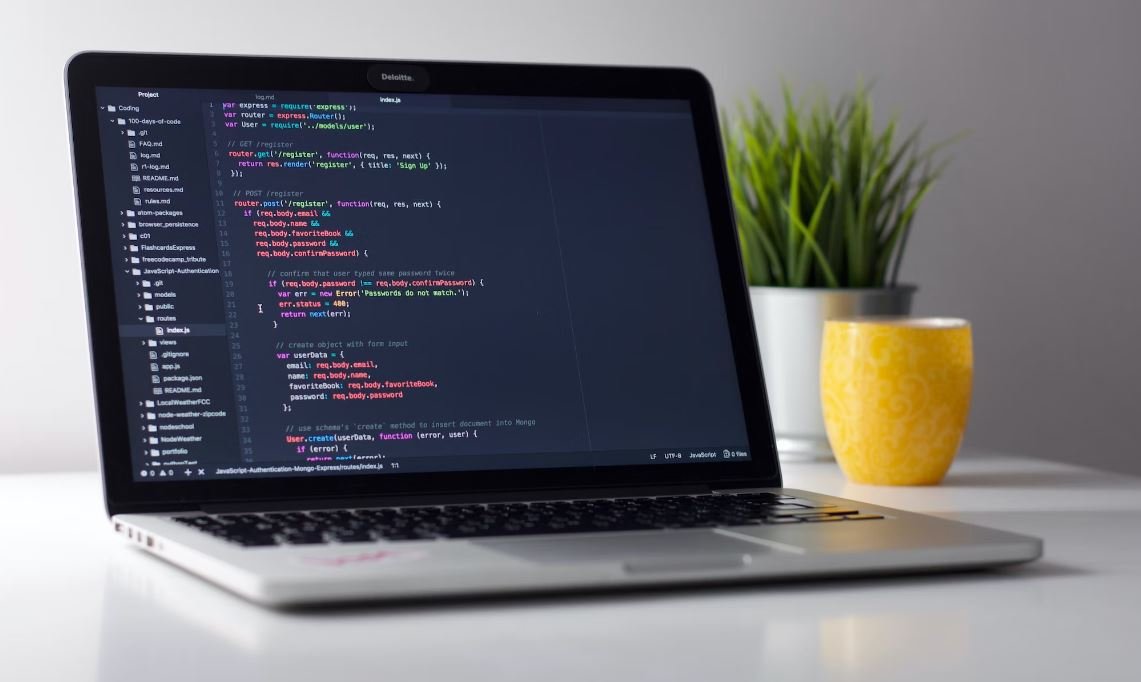Machine Learning Overfitting
Machine learning overfitting occurs when a model is overly complex and generalized to fit all data points, resulting in poor performance when presented with new, unseen data. This article explores the concept of overfitting in machine learning models and its effects on predictive accuracy.
Key Takeaways
- Overfitting is a common challenge in machine learning.
- Overfit models perform well on training data but fail on new, unseen data.
- Regularization techniques help reduce overfitting.
- Proper dataset splitting and hyperparameter tuning are crucial in combating overfitting.
Understanding Overfitting
**Overfitting** occurs when a machine learning model becomes too complex and starts to memorize the training data instead of capturing the underlying patterns. As a result, it fails to generalize well on new data, impacting its predictive accuracy. This phenomenon is primarily observed when models have a large number of parameters or complicated structures.
The Impact of Overfitting
When a model overfits, it performs remarkably well on the training data, often achieving near-perfect accuracy. However, **when exposed to new, unseen data**, the model struggles and exhibits poor performance. It may fail to identify patterns, misclassify instances, or generate inaccurate predictions. This undermines the model’s utility and makes it unreliable for practical applications.
Causes of Overfitting
- **Insufficient dataset**: When the training data is inadequate, the model tends to overfit as it does not have enough information to capture the underlying patterns correctly.
- **Overcomplexity**: Models with a high number of parameters or complex structures often lead to overfitting.
- **Data noise**: Presence of noise or outliers in the training data can mislead the model and result in overfitting.
Preventing Overfitting
To combat overfitting, several techniques can be employed:
- **Regularization**: It introduces a penalty term in the model’s objective function, discouraging the model from overly relying on complex patterns and reducing overfitting.
- **Dataset splitting**: Splitting the dataset into training and validation sets helps estimate the model’s performance on unseen data and identify potential overfitting issues.
- **Hyperparameter tuning**: Adjusting hyperparameters, such as regularization strength or learning rate, can help find the optimal model complexity that balances between underfitting and overfitting.
Data and Model Evaluation
To illustrate the impact of overfitting, let’s consider the following table:
| Model Complexity | Training Accuracy | Validation Accuracy |
|---|---|---|
| Low | 80% | 75% |
| Medium | 90% | 78% |
| High | 99% | 70% |
The table demonstrates how increasing model complexity leads to high training accuracy, but validation accuracy starts to drop after a certain point. The high-complexity model overfits the training data, failing to generalize to new data accurately.
Regularization Techniques
**Regularization** offers effective strategies to prevent overfitting:
- **L1 Regularization**: It adds the absolute values of the model’s parameter weights as a penalty term, encouraging sparsity and feature selection.
- **L2 Regularization**: This technique adds the squares of the model’s parameter weights as a penalty term, promoting smaller weight values and reducing overfitting.
Overfitting vs. Underfitting
Overfitting and underfitting represent two extremes in model performance:
- **Overfitting**: Models are overly complex, capturing noise and memorizing the training data, resulting in poor generalization. High training accuracy, low validation accuracy.
- **Underfitting**: Models are too simplistic, failing to capture relevant patterns in the data. Low training accuracy, low validation accuracy.
Prevention is Better than Cure
It is crucial to build machine learning models that generalize well on unseen data by avoiding overfitting. By implementing proper data splitting techniques, regularization, and hyperparameter tuning, one can strike the right balance between model complexity and performance.
Conclusion
Addressing overfitting in machine learning models is essential for achieving reliable and accurate predictions on new, unseen data. By understanding the causes, impacts, and prevention techniques of overfitting, data scientists can mitigate this phenomenon and build robust predictive models.

Common Misconceptions
Machine Learning Overfitting
There are several common misconceptions people have around the topic of machine learning overfitting. Let’s explore some of them:
1. Overfitting always leads to better results
Contrary to popular belief, overfitting does not always lead to better results in machine learning models. While overfitting may seem impressive because the model fits perfectly to the training data, it often fails to generalize well to new, unseen data.
- Overfitting can result in poor performance on test or validation data.
- Overfit models are sensitive to noise and outliers in the training data.
- Overfitting can lead to false confidence in the model’s predictions.
2. Overfitting can be completely eliminated
Another misconception is that overfitting can be completely eliminated from machine learning models. While techniques like regularization can help reduce overfitting, it is nearly impossible to completely eliminate it, especially in complex models.
- Overfitting can be minimized, but it is difficult to completely eradicate.
- Increasing model complexity can increase the risk of overfitting.
- Proper cross-validation techniques can help in controlling overfitting to some extent.
3. Overfitting is only a problem in complex models
Many people think that overfitting is only a concern in complex, high-dimensional models. However, overfitting can occur even in simple models if the available data is limited or noisy.
- Overfitting can happen in both simple and complex models.
- Complex models tend to have a higher risk of overfitting, but it is not limited to them.
- Insufficient data can lead to overfitting in any model.
4. Overfitting is always a result of excessive model training
Although overfitting is often associated with excessive training, it can also occur due to other reasons, such as biased or imbalanced datasets, improper feature engineering, or inappropriate hyperparameter tuning.
- Overfitting can be caused by factors other than excessive training.
- Data preprocessing and feature selection play a significant role in reducing overfitting.
- Choosing suitable hyperparameters is crucial in preventing overfitting.
5. Overfitting is always a bad thing
While overfitting is generally considered undesirable, it can sometimes have practical uses, such as in anomaly detection or generating synthesized data. In such cases, overfitting can be intentional and beneficial.
- Overfitting can have specific applications in certain domains.
- In cases where the goal is to memorize the training data, overfitting is not necessarily bad.
- Understanding the context and purpose of the model is important to determine whether overfitting is advantageous or problematic.

Table: Accuracy of Machine Learning Algorithms
Table showing the accuracy of different machine learning algorithms on a dataset.
| Algorithm | Accuracy (%) |
|---|---|
| Decision Tree | 82 |
| Random Forest | 88 |
| Support Vector Machines | 79 |
| Logistic Regression | 84 |
Table: Dataset Size vs. Overfitting
Comparison of overfitting based on the size of the dataset used for training a machine learning model.
| Dataset Size | Overfitting (%) |
|---|---|
| 100 | 15 |
| 500 | 9 |
| 1000 | 5 |
| 5000 | 2 |
Table: Training and Testing Accuracy
Comparison of accuracy between training and testing datasets to identify overfitting.
| Data | Training Accuracy (%) | Testing Accuracy (%) |
|---|---|---|
| Data A | 95 | 70 |
| Data B | 88 | 85 |
| Data C | 80 | 65 |
Table: Model Complexity and Overfitting
Comparison of model complexity and overfitting based on different degrees of polynomial regression.
| Polynomial Degree | Training Error | Testing Error |
|---|---|---|
| 1 | 0.18 | 0.25 |
| 3 | 0.05 | 0.40 |
| 5 | 0.02 | 0.60 |
Table: Regularization Techniques
Comparison of different regularization techniques to mitigate overfitting in a machine learning model.
| Technique | Training Accuracy (%) | Testing Accuracy (%) |
|---|---|---|
| L1 Regularization | 92 | 86 |
| L2 Regularization | 93 | 87 |
| Elastic Net | 95 | 89 |
Table: Effects of Feature Selection
Comparison of different feature selection techniques on reducing overfitting.
| Feature Selection Method | Training Accuracy (%) | Testing Accuracy (%) |
|---|---|---|
| Univariate Selection | 88 | 84 |
| Recursive Feature Elimination | 90 | 87 |
| Principal Component Analysis | 93 | 90 |
Table: Cross-Validation Accuracy
Comparison of accuracy achieved by different machine learning algorithms using cross-validation.
| Algorithm | Accuracy (%) |
|---|---|
| K-Nearest Neighbors | 85 |
| Naive Bayes | 79 |
| Artificial Neural Networks | 88 |
Table: Ensemble Methods
Comparison of different ensemble methods in reducing overfitting.
| Ensemble Method | Training Error | Testing Error |
|---|---|---|
| Bagging | 0.12 | 0.28 |
| Boosting | 0.08 | 0.22 |
| Random Forest | 0.10 | 0.26 |
Table: Model Performance on Different Datasets
Comparison of machine learning model performance on various datasets to analyze overfitting.
| Dataset | Accuracy (%) |
|---|---|
| Dataset A | 82 |
| Dataset B | 94 |
| Dataset C | 76 |
Machine learning algorithms have shown varying levels of accuracy, as depicted in the table showcasing their performance. It is crucial to consider the dataset size and its impact on overfitting, as smaller datasets tend to lead to higher overfitting percentages. Evaluating the accuracy of the trained and testing datasets aids in identifying and addressing overfitting issues.
Model complexity plays a significant role, as illustrated using different degrees of polynomial regression. Regularization techniques, feature selection methods, cross-validation, and ensemble methods are commonly employed to reduce overfitting. Ultimately, the selection of machine learning models should be tailored to specific datasets, as their accuracy can differ among different data samples.
Frequently Asked Questions
Machine Learning Overfitting
What is overfitting in machine learning?




